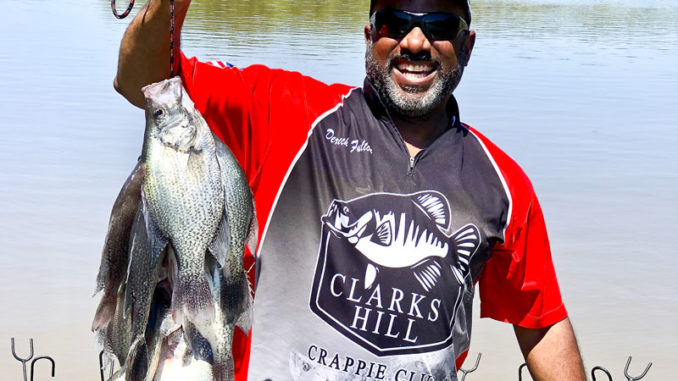
If you think crappie fishing is strictly a springtime deal, think again. Here’s how to load up on slabs in the heat of the summer.
During March and April, everyone is a crappie expert.
Fishing boats galore can be found on Carolina lakes when these tasty panfish are moving shallow or hanging out around every tree and bush next to the bank.
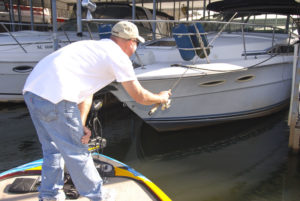
But what about when the summer crowds take over the lake? When the jet-skiers and pontooners and wake boarders take over, crappie tend to seek shelter just like anglers, only in different places.
Derek Fulton of Grovetown, Ga., is a retired U.S. Army veteran who spends as much time as possible chasing crappie on his home lake, Clarks Hill, on the South Carolina/Georgia border. Fulton said summer means it’s time to search out submerged, standing timber in deep water.
Fulton said locating standing timber on the edge of a main creek or river channel is a great way to find some big, summer crappie. In fact, he searches for individual crappie by scanning the drop-off sides of the timber with his Garmin Panoptix sonar unit. The unit reads areas in front of the boat, and by moving the transducer head back and forth from a distance of 60 feet, Fulton can target solitary slab crappie.
Go ultralight, keep your distance for summer crappie
“Once I zoom in on one, I’ll stay back about 20 feet and cast to them,” he said. “You find out real quick with the Garmin unit how easy the big fish spook.”
Fulton’s casting setup is a 7-foot ultralight rod and reel spooled with 4-pound Mr. Crappie camo line. He will attach a 1/16-ounce jighead paired with a curlytail or paddletail grub and watch the bait on the screen as it falls toward the fish, then engages the reel and starts reeling.
“I love it when I see that fish come up,” he said. “If he starts rising to meet the bait, you’ll catch him.”
After he’s caught the loners, he may opt to go search for other big fish or locate a tighter school of fish.
“When you see a whole school holding tight to timber, you can get right on top of them,” he said. “In fact, they won’t move much in the summer; they’re sorta sluggish.
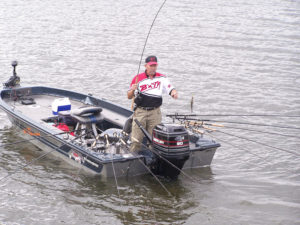
In this scenario, Fulton will position his boat above the school and then lower a tiny, 1/48-ounce jighead paired with a FishStalker slabtail jig to the fish. To get the bait down quickly and maintain feel at depths of 15 feet, he’ll attach a No. 3 split shot about 8 inches above the jig.
“I might be in 30 feet of water, but I’m watching those fish on the screen, and I can see the bait descending to the fish and see how they react to it,” he said. “I make whatever changes I need to, but that’s a good way to fill a limit in a hurry.”
Large docks are a big key to summer crappie
On many clear lakes, like Lake Wylie on the North Carolina/South Carolina border southwest of Charlotte, N.C, crappie movements may be more vertical than horizontal as the seasons change.
Pro angler Mike Parrott said that a particular segment of Wylie crappie takes up year-round residence around larger residential and commercial boat docks.
“Everything these fish need can be found around these big docks: depth, food and cover,” he said, “I think these fish even spawn under these docks. All they have to do is move from shallower to deeper as the weather dictates.”
In order to target crappie that hide under the boats and floats that make up a large boat dock, Parrott uses a dock shooting rod to shoot a tiny jig under the docks.
“It takes a bit of practice,” Parrott said. “You bend the rod over and hold the jig between your thumb and forefinger under the reel. Release the jig and simultaneously release the line, which sling-shots the bait forward, parallel to the water, causing it to skip up under the boat or dock or whatever you’re shooting at.”
Summer on Wylie means a very light bite, so Parrott uses 4-pound test and a 1/64-ounce jig. Allowing the jig to free-fall after letting fly, Parrott intently watches the line for the slightest tick, movement or simply piling up on the surface, indicating a fish has inhaled the jig.
Long-line trolling is also a good summer tactic
“Crappie don’t move around much in ultra-warm water,” he said. “So if I don’t get a bite at one stall, I can move over to the next stall and it may be covered up with fish.”
The middle of summer will find Stokes McClellan of Huntersville, N.C., fishing the same way he does nearly year-round: long-line trolling. The difference between his spring and summer tactics is the depth he fishes.
“I usually need to get to at least 15 feet, and instead of a shallow flat, I’m going to troll over deep-water ledges and around the mouths of major creeks,” he said.
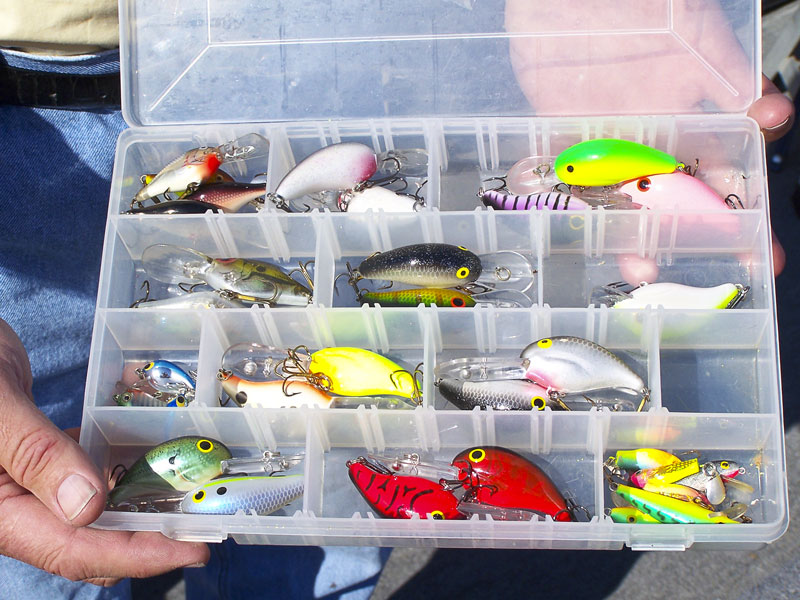
One caveat to what McClellan trolls behind his boat is what species of crappie swims under it.
“Many of our North Carolina lakes have white crappie, places like Jordan and High Rock, and these are good lakes to troll crankbaits in,” he said. “Other lakes in South Carolina, like Wateree and Greenwood, have black crappie, so I stick to trolling jigs in those lakes.”
Time spent marking bait is time well spent
McClellan long-lines crappie jigs using as many as 14 rods of a variety of lengths to space the lines around the stern of his boat. He uses 4-pound test, which allows his to reduce drag and get deeper with a 1/8- or 3/16-ounce jighead. He pairs these heads with either a 3-inch Charlie Brewer grub or a 2 1/8-inch paddletail. His average trolling speed is about 1.0 mph.
“Crappie usually want a bigger bait in the summer, which is why I use Bandit 300 series crankbaits or the bigger Bobby Garland Stroll’R and Charlie Brewer grubs,” he said.
McClellan doesn’t troll anywhere for either species of crappie until he marks scattered pods of baitfish on his sonar unit.
“If you don’t mark bait first — the scattered kind, not layered up in big schools — then you’re wasting your time,” he said. “You can troll 2 miles of channel edge, and then you start catching fish because you crossed into some good bait. I go to the bait first and usually find fish there.”
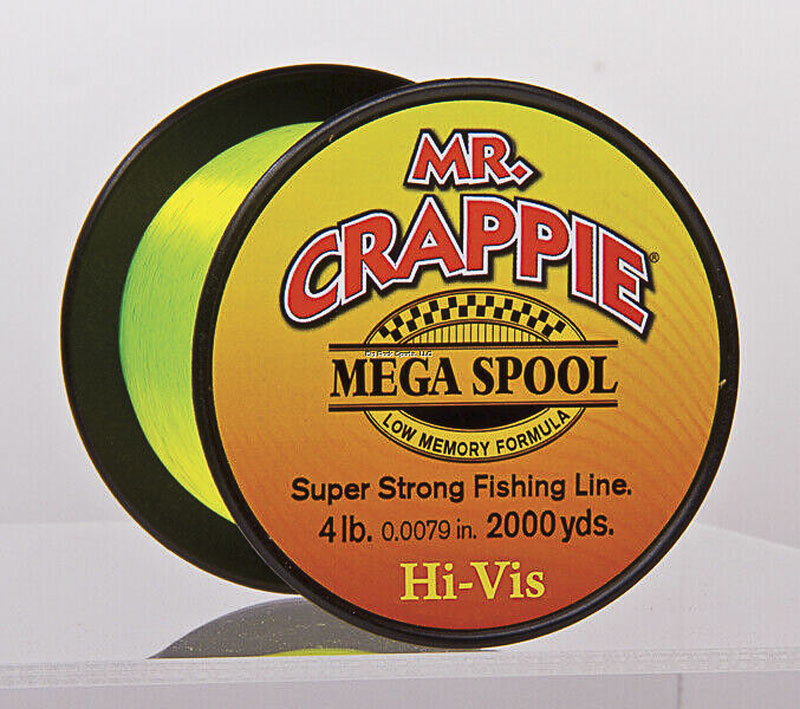
What’s up with 4-pound line?
Russ Bailey, the host of BrushPile Fishing TV, has been shooting docks for many years, and up until last year, he always used 6-pound line. That ended when he started using high-vis 4-pound line.
Bailey has several reasons for using lighter line when shooting docks. He found he could shoot a jig further, and he discovered the line really jumps when the crappie takes the jig.
“Dock shooting is all about seeing the bite,” he said. “If you wait ‘til you feel it, you’ll miss a lot of fish, so that 4-pound high-vis line makes a big difference in seeing bites.”
Bailey said he’s even started using the lighter stuff in other crappie-fishing situations.
“A lot of guys long-line troll with 4-pound test because the smaller-diameter line provides less resistance,” he said. “Guys are even using it to vertical-jig in open water where crappie may be sluggish or in clear water.”
Bailey’s personal line choice is Gamma — he said a lot of guides and pros have their own favorites — but using 4-pound test is consistent across the board.
“It’s just one of those little adjustments that I make in my crappie fishing, the more I fish with guys and see what they’re doing. For me, the jump down to 4 pound was a big deal,” he said.

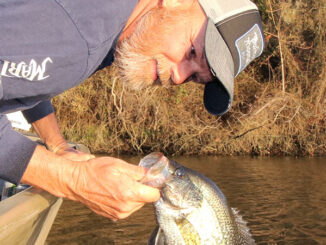
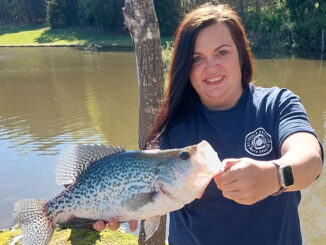


Be the first to comment